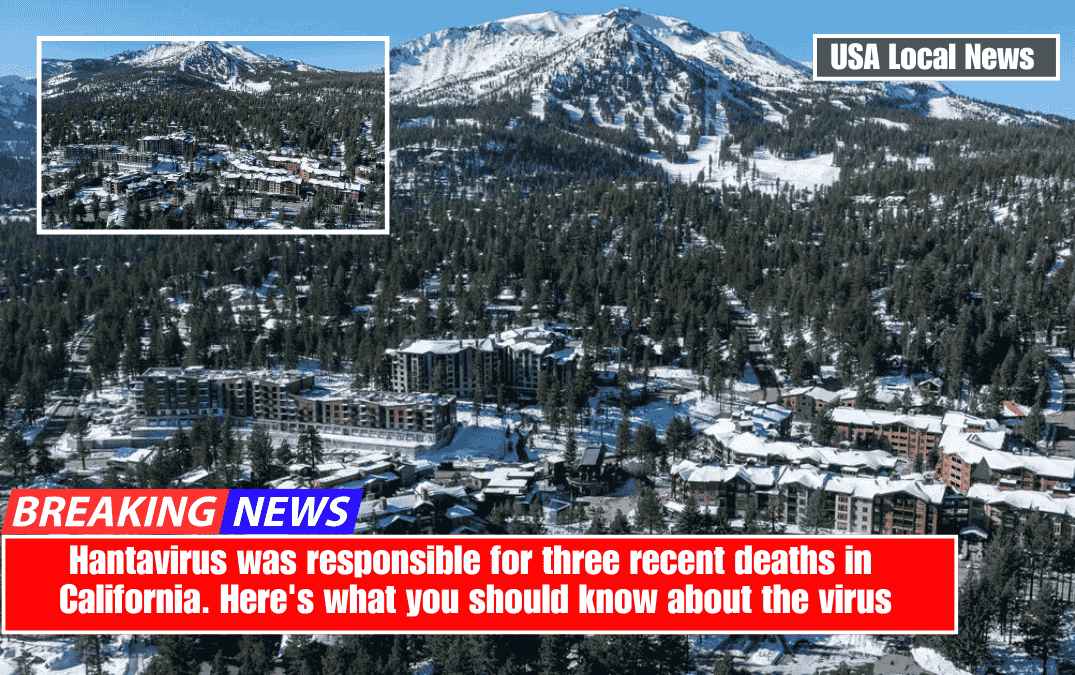Three people in Mammoth Lakes died recently from hantavirus, the same illness that killed Gene Hackman’s wife Betsy Arakawa earlier this year. The cases have raised concerns among public health officials about the spread of the rare but lethal disease that attacks the lungs.
Dr. Heather Jarrell, chief medical examiner at the New Mexico medical investigator’s office, told a news conference last month that the mortality rate among those infected in the American Southwest ranges between 38% and 50%. Many people were unaware of Arakawa’s death from hantavirus pulmonary syndrome in March, which was confirmed by New Mexico’s chief medical examiner.
According to the California Department of Public Health, the virus can be transmitted through the urine, feces, or saliva of wild rodents such as deer mice, which are common in many parts of California.
All three people who contracted and died from the virus in Mammoth Lakes had symptoms that started in February. According to health officials, only one of the three had a large number of mice in their home; however, there was evidence of mice in all three’s workplaces.
That “is not unusual for indoor spaces this time of year in Mammoth Lakes,” said Dr. Tom Boo, a public health officer for Mono County, which includes Mammoth Lakes.
“We believe that deer mouse numbers are high this year in Mammoth, and probably elsewhere in the Eastern Sierra,” he informed me. “An increase in indoor mice elevates the risk of hantavirus exposure.”
Mono County has the most hantavirus cases in California, with 27 reported since 1993.
Has hantavirus been detected in Los Angeles County before?
Hantavirus is uncommon in Los Angeles County, with the majority of cases traced back to exposure outside the county. The last hantavirus-related death in Los Angeles County was reported in 2006.
Even though rodents are more commonly found in rural and semi-urban areas, any area or structure that the animals use as a home can be a source of concern for infectious disease, whether in a city or out in the country. Infrequently used buildings, such as sheds, cabins, storage facilities, campgrounds, and construction sites, are particularly vulnerable to rodent infestation.
How can you protect yourself against hantavirus?
Hantavirus cases can occur at any time of year, but the peak seasons for reported cases in the United States are in the spring and early summer, which coincide with deer mouse reproductive season.
To reduce the risk of infection, avoid rodents, their droppings, and nesting materials.
In addition, do everything you can to keep wild rodents out of your home, office, cabin, shed, car, camper, or other enclosed space.
To do so, Los Angeles County public health officials suggest :
- Sealing up holes (the width of a pencil or larger) and other openings where rodents like mice can get in.
- Place snap traps to catch any rodents (The CDC cautions against using glue traps or live traps because they can scare the rodents, causing them to urinate, which increases your chance of exposure to any virus they may be carrying.)
- Store all food items in rodent-proof containers .
If you find evidence of mice in your home or workplace, set up snap traps and remove their waste.
If this happens, local and state officials recommend the following steps to clean up while protecting yourself from exposure:
Before you clean:
- Air out the space you will be cleaning for 30 minutes.
- Get rubber or plastic gloves, an N-95 mask and a disinfectant or a mixture of bleach and water.
While cleaning (with gloves on):
- Spray the contaminated areas with your disinfectant and let it soak for at least 5 minutes.
- Do not sweep or vacuum the area — that could stir up droppings or other infectious materials into the air.
- Use paper towels, a sponge, or a mop to clean. Put all cleaning materials into a bag and toss it in your trash bin.
What to expect if you do contract the hantavirus
The symptoms are similar to those of other respiratory infections, including fever, headache, muscle aches, and difficulty breathing. Some people report nausea, stomach pain, vomiting, and diarrhea.
The symptoms typically appear weeks after breathing in air contaminated by infected deer mice.
According to the Mayo Clinic, complications of hantavirus pulmonary syndrome can cause lung tissue damage and fluid buildup. It can also impair heart function; in severe cases, the heart may fail to deliver oxygen to the body. Coughing, difficulty breathing, low blood pressure, and irregular heartbeat are all warning signs.
What can you do to treat hantavirus pulmonary syndrome?
There is no specific treatment or cure for the disease, according to the American Lung Association. However, early medical care can improve survival rates.
The ALA stated that if the virus is detected early and the infected person is treated in an intensive care unit, the person’s condition may improve.
Intubation and oxygen therapy, fluid replacement, and blood pressure-lowering medications are all possible ICU treatments.
If your symptoms become severe, contact your doctor.















